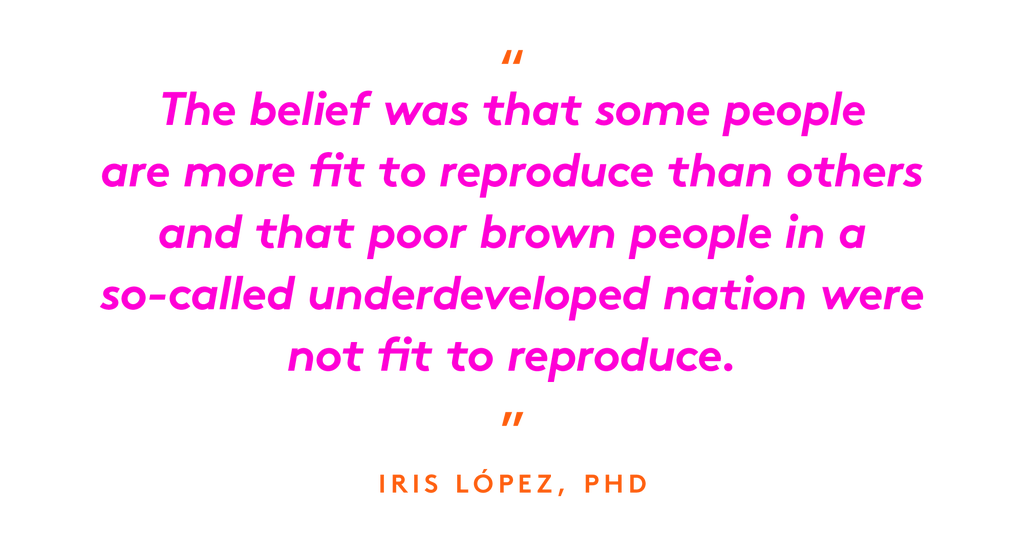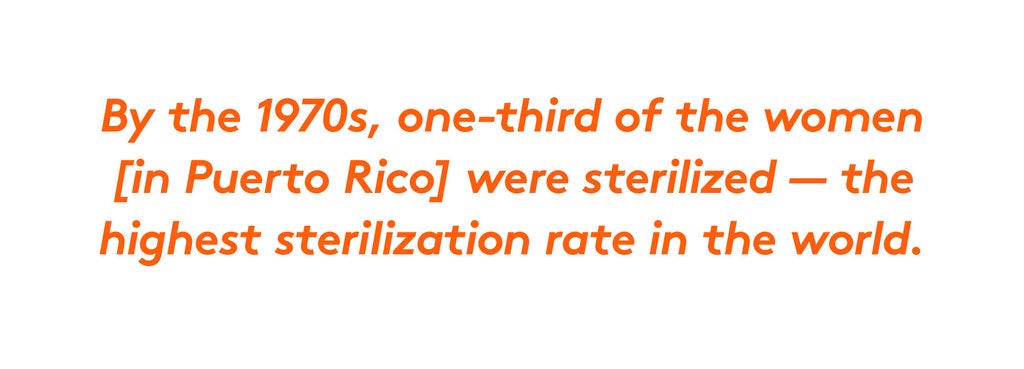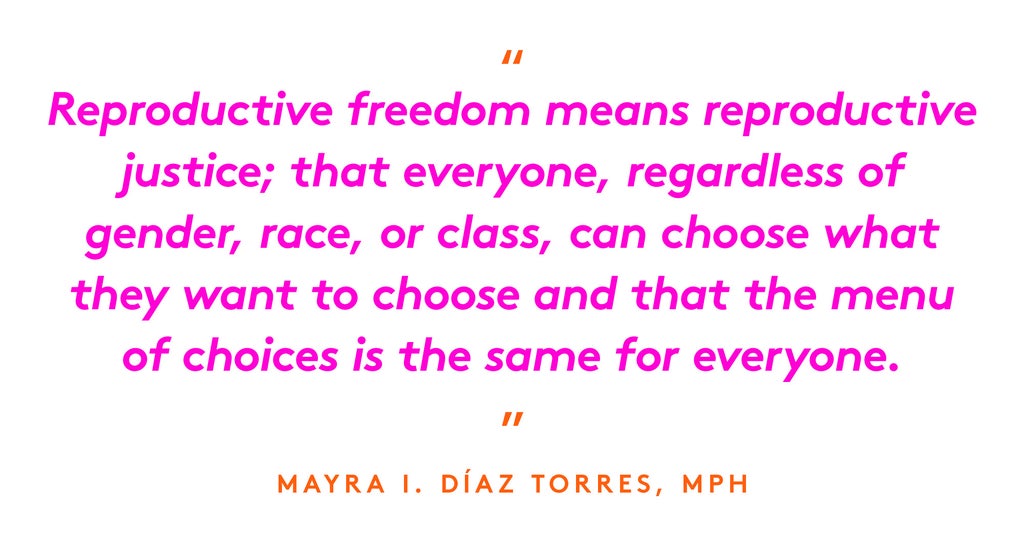In Puerto Rico, A History Of Colonization Led To An Atrocious Lack of Reproductive Freedom
October 20, 2020BruceDayne#DMTBeautySpot #beauty
When birth control pills hit the U.S. market in 1960, it heralded a new age of sexual autonomy for women. “Freedom in a tablet,” as it’s been called, liberated women from becoming pregnant when they didn’t want to and gave them more control over their reproductive choices. But in Puerto Rico, where women were used as subjects for birth control trials and impelled to undergo sterilization, the emancipating drug also carries a history of coercion and is emblematic of Puerto Rican women’s enduring struggle for reproductive freedom.
In Puerto Rico, fertility control developed under colonialism in the early 20th century, after the Caribbean archipelago had been seized by the United States in the Spanish-American War of 1898. During this time, neo-Malthusianism — the belief that poverty stems from the proliferation of the poor — was a popularly held view throughout the West, notably by prominent U.S. officials and intellectuals, who also endorsed pseudo-scientific eugenics theories as a means to guarantee that only able-bodied, rich, white people were encouraged to reproduce. The colonial governments in Puerto Rico and the contiguous U.S. were filled with people who believed these philosophies, and the archipelago was deemed overpopulated, specifically by a citizenry of impoverished and thus “inferior” Black and brown people. To solve the alleged problem, government officials instituted policies that, among other things, reduced births through sterilization.
“These programs developed within a colonial, eugenic social context, where the belief was that some people are more fit to reproduce than others and that poor brown people in a so-called underdeveloped nation were not fit to reproduce,” Iris López, PhD, the director of the Latin American and Latin@ Studies program at City College of New York, tells Refinery29.
Starting in 1937, when Law 116, allowing eugenics-based sterilization, passed in Puerto Rico, the U.S. federal government began subsidizing and promoting the irreversible procedure on the archipelago. With additional encouragement from local industrial employers, who favored sterilized laborers, and health workers, who went door-to-door imploring mothers who had two children to undergo hysterectomies or tubal ligations, sterilization became so common and normalized that it was simply referred to as “la operación.” By 1953, nearly one-fifth of Puerto Rican women had received the free procedure. Many of them were unaware the surgery was irreversible. Over the course of three decades, the colonial government, under the Puerto Rican Eugenics Board, also ordered the sterilization of 97 people, including many who were disabled.

The surgery was urged at birth control clinics throughout the archipelago, including several that were established by U.S. eugenicist Clarence Gamble, an heir to the Procter & Gamble company. Throughout the 1930s, he used his facilities to test contraceptives that had not yet been approved by the FDA — like the diaphragm, foam powder, sponge, and spermicidal jelly — on 1,500 women on the archipelago. In the 1950s, Gamble also supported and encouraged biologist Gregory Pincus and obstetrician John Rock to test a hormonal birth control pill they were developing on Puerto Rican women. In the U.S., the men — who were championed by Planned Parenthood founder Margaret Sanger and philanthropist Katharine Dexter McCormick — were also secretly testing the drug on a small group of women. However, they knew that the medication would never receive the FDA approval needed to bring it to market without large-scale experimenting.
Starting in 1955, the pair conducted several trials in impoverished neighborhoods throughout the archipelago, most notoriously at a housing project in Río Piedras. The hundreds of women who participated knew the drug prevented pregnancy, but they were unaware that they were part of a clinical trial. They also didn’t know that the medication, which contained much higher doses of hormones than modern-day birth control pills, was in an experimental stage or that it carried negative side effects. About 17 percent of the women in the study complained of nausea, dizziness, headaches, stomach pain, and vomiting, while three participants died. The deaths of the women were not investigated, and Pincus and Rock dismissed the complaints as psychosomatic.
Bianca I. Laureano, an Oakland, CA-based sexual educator who has centered birth control’s troubling history in her academic research and writing, calls the trials “dehumanizing.” She also notes that while the tests were part of a project to expand contraceptive options for women in the U.S., the eugenicists behind the pill disvalued Puerto Rican life and openly discussed their desire to have the population wiped out.
“The idea of [Puerto Ricans] being unfit to form families as we choose is rooted in white supremacist culture and beliefs. No matter how Puerto Ricans may identify their racial background, the fact that they are Puerto Rican was enough to erase an entire community and attempt to abolish a culture,” Laureano tells Refinery29.
Nevertheless, by 1960, Enovid, though tested on women without their informed consent, was approved by the FDA and available across the U.S. Back in Puerto Rico, however, the medication, which was priced at 50 cents a pill or $11 a month, was inaccessible to the destitute women who played a key role in the tablet’s creation. As a result, sterilization continued to be the main form of birth control on the archipelago. By the 1970s, one-third of the women were sterilized — the highest sterilization rate in the world.
In Matters of Choice: Puerto Rican Women’s Struggle for Reproductive Freedom, López notes that some women were victims of sterilization abuse, particularly in the early 20th century, while later generations predominantly had the procedure deliberately. Those who chose the irreversible surgeries, she says, did so through so-called “agency within constraints.” In other words, the women who opted for sterilization practiced agency because they understood the weight of their decision. However, their choices were limited to their economic reality, like their inability to purchase other forms of birth control.

“When we look at the question of what constitutes reproductive freedom, then we have to say that they are not exercising full reproductive freedom, not even the women who are making these decisions, because of the conditions under which they are making them,” López says.
The U.S.’s legacy of coercive sterilizations and fertility control isn’t relegated to the distant past, and extends beyond Puerto Rico. This past September, a nurse at a private immigration detention center in Georgia came forward about a U.S. Immigrations and Customs Enforcement (ICE) facility that was actively performing mass hysterectomies on detained people. In California’s prisons between 2006 and 2010, nearly 150 women were sterilized. Similarly to what was done in Puerto Rico in the mid-20th century, these women had “agency within constraints,” but nothing close to true reproductive freedom.
More than half a century after the birth control trials and mass sterilizations in Puerto Rico, there is still a lack of reproductive freedom there, according to Mayra I. Díaz Torres, the program director of Clínica IELLA, a San Juan-based clinic offering affordable gynecological and abortion services. While abortion is legal on the archipelago and there are more birth control options available today, Torres argues that these services aren’t accessible or even broadly known to Puerto Ricans.
“For a long time, sterilization felt like the only option for poor women. Fast-forward to 2020, they still don’t have options,” Torres tells Refinery29. “When the prices of these products are extremely and obscenely high, you are limiting the options of these women and they are at a disadvantage.”
In Puerto Rico, nearly half of the population lives below the poverty line, making the hefty price tags on birth control unaffordable to many. For instance, IUDs can cost more than $1,000, while monthly fees for contraceptives like the pill, the patch or the ring can range from $10 to $150 a month. Even more, abortion care, which is barred from federal funding due to the Hyde amendment, ranges between $275 to $2,400, depending on the term of the pregnancy.
“Reproductive freedom means reproductive justice; that everyone, regardless of gender, race, or class, can choose what they want to choose and that the menu of choices is the same for everyone. Here, the menu for the rich has a lot more pages than the menu for the poor,” Torres says.
Further complicating things is the fact that reproductive rights are currently under siege in Puerto Rico, and Torres fears that people’s available options could soon be even slimmer. In 2019, lawmakers passed PS950, a bill that would have required women under the age of 18 to obtain their parents’ consent to get an abortion, among other restrictions. Then-Gov. Ricardo Rosselló vetoed it; however, the author of the bill, Sen. Nayda Venegas Brown, vowed to introduce many more anti-choice measures. Her threat became ever-more frightening in June, when Gov. Wanda Vázquez signed a new civil code, the archipelago’s second-most important legal document, that included perplexing language that could offer protections to fetuses.

In addition to the political struggles, Puerto Rico only has four abortion clinics servicing the entire archipelago, and most are in the San Juan metropolitan area, with one in Ponce; they also serve neighboring countries with limited abortion access, like the Dominican Republic. Moreover, some of the already small number of the providers are above the age of 70 and will be retiring soon, leaving those in need of abortion care with even fewer options.
Soon, Torres fears, Puerto Rico, once an abortion haven for well-off white American women in the ‘70s and a testing ground for birth control research, could again leave the reproductive needs of its most marginalized — its natives — behind.
Through the campaign Aborto Libre, Seguro y Accesible en Puerto Rico, Torres, alongside other reproductive rights activists, is fighting back against the political and social strikes on abortion through educational efforts that aim to improve the archipelago’s substandard sexual education program and inform people of their reproductive rights.
“There needs to be comprehensive sexual health education in schools. There needs to be a cultural change in the way we see sex and sexuality as taboos. There needs to be multiple birth control methods available for free as well as more clinics that offer quality and accessible abortions, and all of these services need to take place in facilities that are trans-inclusive and treat everyone with dignity,” Torres says. “That’s when we’ll have reproductive freedom in Puerto Rico.”
Like what you see? How about some more R29 goodness, right here?
Puerto Rico Faces A Battle Over Abortion Rights
A Year After Maria, Puerto Ricans Tell Their Story
A Guide To Abortion Laws & Clinics In Your State
DMTBeautySpot
via https://www.DMTBeautySpot.com
Raquel Reichard, Khareem Sudlow


0 comments